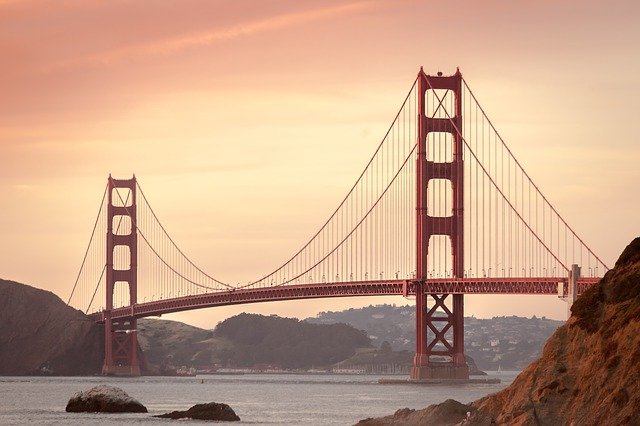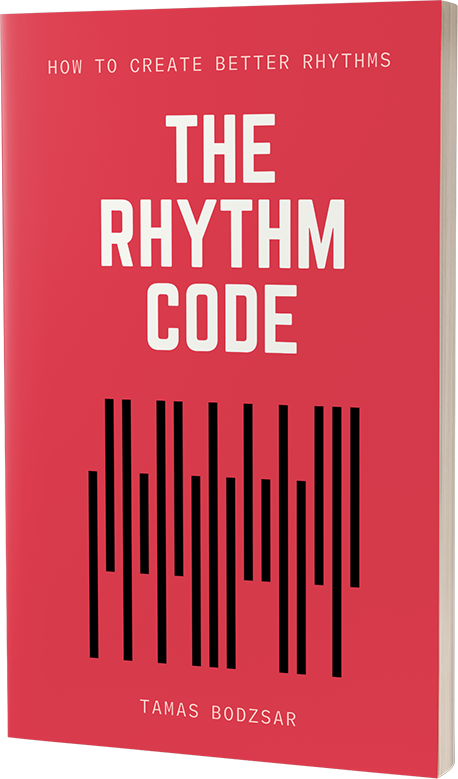
The Essence of Song Structure
In the realm of music, structure is the invisible force that guides the listener on a transformative journey. It’s the roadmap, the compass, and the architect of musical narratives. Songwriters wield this power to lead their audiences, evoke emotions, and maintain unwavering interest. At the heart of this intricate web of structure lies the bridge, an often-underestimated but essential component of songwriting.
In this comprehensive guide, we’ll embark on a voyage to unravel the mysteries of song structure, with a keen focus on the bridge—a versatile section that plays a pivotal role in crafting musical tales. The bridge is not merely a deviation from the norm; it’s a gateway to a new dimension in a song, offering a fresh perspective, a change in emotion, and a break from the monotonous repetition that can plague a musical piece.
Understanding the Bridge
A. Definition and Placement
Let’s begin our exploration by defining the bridge and its strategic placement within a song’s architecture. The bridge is a distinct section that typically graces us after the second chorus. It stands as a bridge between familiar territory and uncharted waters, introducing a new musical idea, a different perspective, or a change in tone. It’s the twist in the plot, the unexpected turn, and the catalyst for heightened emotional engagement.
B. Breaking the Monotony
In a world where predictability can diminish the magic of music, the bridge shines as a beacon of change. It’s a tool that helps songwriters combat the monotony that often creeps in with the repetitive structure of verse-chorus-verse-chorus. The bridge’s arrival breathes life into the composition, offering a sense of renewal and excitement that can reignite the listener’s enthusiasm.
C. The Evolution of Songwriting
The landscape of songwriting has evolved over time, influenced by ever-changing musical trends. The rise of genres like EDM and shifts in popular music have influenced the inclusion (or exclusion) of bridges in songs. We’ll delve into how songwriters adapt to these changes and why the bridge remains a fundamental element for those who appreciate traditional song forms.
In the forthcoming sections, we’ll journey deeper into the creation of the perfect bridge, exploring the techniques and tools that songwriters employ to craft this section. We’ll also address the significance of contrast, chord progressions, melody, and the specific timing of the bridge. As you progress, remember that the bridge is not just a musical interlude but a gateway to a new dimension within your song.
How to Craft the Perfect Bridge
Now that we’ve set the stage for the importance of bridges in songwriting, let’s delve into the art of creating the perfect bridge. Here, we’ll explore the techniques and principles that breathe life into this vital section, turning it into a bridge that leads your audience on a memorable musical journey.
A. The Art of Contrast
One of the bridge’s primary functions is to provide a stark contrast to the preceding sections of the song, namely the verse and chorus. This contrast can be achieved through various means, such as changing the musical direction, dynamics, and emotional tone. We’ll uncover how contrast serves as the bridge’s secret ingredient, capturing the listener’s attention and providing a fresh perspective.
B. Playing with Chord Progressions
Among the most powerful tools at your disposal is the choice of chord progressions in your bridge. The chords you select can create a unique atmosphere, different from that of the verse and chorus. We’ll discuss how to use chord progressions strategically to craft a bridge that stands out and complements the song’s narrative.
C. Melody as a Contrast Tool
Melody is a powerful vehicle for conveying emotions and distinguishing the bridge from other song sections. Even if your bridge shares the same chord progression as the verse or chorus, a unique melody can create a clear contrast. We’ll delve into how crafting a different melody for the bridge can make this section truly memorable.
D. The Timing of the Bridge
Timing is everything when it comes to songwriting, and this holds true for the bridge as well. We’ll emphasize the importance of placing the bridge after the second chorus. This timing allows the bridge to serve its purpose as a point of renewal and emotional pivot within the song.
E. Bridging to the Chorus
A well-crafted bridge not only offers a departure from the familiar but also serves as a springboard to another chorus. We’ll discuss the transition from the bridge to the chorus, highlighting how this connection can enhance the overall impact of your song.
F. Altering the Arrangement
In addition to changing chords and melodies, you can modify the arrangement in the bridge to make it stand out. We’ll explore how tweaking elements like the drum groove or instrumentation can create a distinct soundscape in the bridge.
G. Modulating: The Risky Adventure
For those willing to take a more adventurous songwriting route, modulating (changing the musical key) in the bridge can be a bold move. We’ll examine the potential benefits and risks associated with this technique, providing guidance on when and how to effectively use modulation to your advantage.
Exploring Alternatives
While the bridge is a valuable asset in songwriting, it’s important to recognize that it’s not always a mandatory component. In this section, we’ll explore alternative approaches to infuse color and diversity into your songs.
A. The Bridgeless Approach
A bridgeless song is not devoid of structure or depth. There are instances where a bridge might not be necessary for the musical narrative you’re crafting. We’ll discuss when it’s appropriate to forego the bridge and how to ensure your songs remain engaging and captivating without it.
B. The Instrumental Solo
An alternative to the bridge that can infuse an extra layer of intrigue into your composition is the instrumental solo. While less common in modern commercial pop songs, it’s a cherished element in various genres. We’ll examine how to use instrumental solos effectively, exploring their potential to captivate and elevate your music.
C. Recycling Parts
Sometimes, a bridge might not be needed because other sections of your song can serve a similar purpose. One such section is the pre-chorus, which can be repurposed to act as a bridge. We’ll explore the idea of reusing and repackaging song parts to create engaging alternatives.
Real-World Examples
To truly understand the impact of bridges and alternative songwriting techniques, it’s valuable to explore real-world examples. These songs showcase how bridges and creative song structures can be employed to captivate listeners and create unforgettable musical moments.
A. Bridge-Centric Songs
-
“Bohemian Rhapsody” by Queen: This timeless classic showcases how a bridge can be a song’s centerpiece, taking listeners on a journey through various musical styles and emotions.
-
“Hey Jude” by The Beatles: “Hey Jude” features a bridge that acts as the song’s emotional climax, demonstrating how a well-crafted bridge can elevate a song’s impact.
B. Instrumental Solo Alternatives
-
“Comfortably Numb” by Pink Floyd: In this iconic rock track, Pink Floyd uses an extended guitar solo in place of a traditional bridge, creating a mesmerizing instrumental interlude.
-
“Hotel California” by Eagles: The renowned guitar dueling in the latter part of the song serves as an instrumental bridge, adding an extra layer of intrigue and complexity.
C. Repurposed Song Parts
-
“Billie Jean” by Michael Jackson: The pre-chorus of “Billie Jean” acts as a bridge in this song, showing how a recycled section can serve as a transition that maintains the song’s flow.
-
“Livin’ on a Prayer” by Bon Jovi: This song utilizes a dynamic pre-chorus that bridges the gap between the verse and the chorus, adding anticipation and energy.
Conclusion: Embrace the Diversity of Song Structures
In the grand tapestry of music, song structures are the threads that weave together a captivating narrative. The bridge, with its unique ability to refresh and redirect a song’s course, stands as a testament to the endless possibilities of songwriting. However, it’s crucial to recognize that song structure is not a one-size-fits-all endeavor.
As we close this comprehensive guide on the power of song bridges and alternative songwriting techniques, here are the key takeaways:
-
The Bridge’s Role: The bridge serves as a vital component of song structure, injecting contrast, emotion, and a refreshing twist into a composition. It is your tool to break the mold and maintain the listener’s engagement.
-
The Art of Contrast: Contrast is the bridge’s secret weapon. It creates a clear distinction between the bridge and other song sections, making it a memorable and impactful element.
-
Chord Progressions and Melody: Crafting unique chord progressions and melodies for the bridge adds depth and intrigue to your song, even if the rest of the song follows a familiar pattern.
-
Timing Matters: Placing the bridge after the second chorus is essential for maximizing its potential as a point of renewal and emotional pivot.
-
Transition to the Chorus: Smooth transitions from the bridge to another chorus enhance the overall cohesion of your song.
-
Experiment with Arrangement: Don’t be afraid to change elements like drum grooves or instrumentation in the bridge to create a distinct soundscape.
-
Modulation as a Tool: While modulation can be a risky songwriting tool, it can yield rewarding results when used strategically.
-
Exploring Alternatives: In some cases, a bridge might not be necessary. Consider alternative techniques, such as instrumental solos or repurposing song parts, to add diversity and intrigue.
By embracing the diversity of song structures and techniques, you have the power to craft songs that resonate with your unique artistic vision. The choices you make in your songwriting journey are the brushstrokes that paint the canvas of your music, creating a sound that is distinctly your own.
As you venture forth in your songwriting endeavors, remember that there are no strict rules. Whether you choose to embrace the traditional bridge or opt for alternative methods, let your creativity and storytelling guide you. Songwriting is an art form, and the canvas is yours to fill.
So, with the knowledge of bridges and alternative songwriting techniques in your repertoire, take a deep breath, pick up your instrument, and let the diverse world of song structures be your playground. Your musical journey is boundless, and the possibilities are endless. Create, explore, and let your songs echo in the hearts of your audience.
The secret pattern behind successful songs
Get the eBook for $7

